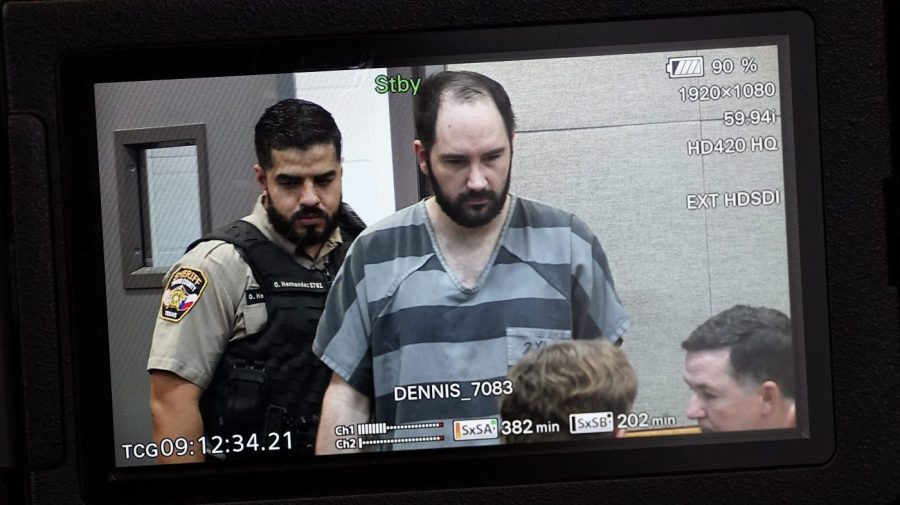
On May 16, Texas Gov. Greg Abbott pardoned Daniel Perry on the recommendation of the Texas Board of Pardons and Paroles. The pardon wiped out a jury’s finding that Perry murdered 28-year-old Garrett Foster at a Black Lives Matter protest in July 2020, for which Perry was sentenced to 25 years in prison (with the possibility of parole half-way through).
Abbott had embraced calls for a pardon on Twitter immediately after Perry’s conviction, and followed up with a rare request that the pardon board expedite review before sentencing. Whitney Mitchell, who was engaged to Garrett Foster when he was shot to death, is a quadruple amputee who testified during Perry’s sentencing that Foster had been her caretaker for 11 years. In the end, Perry served a little over one year in prison for the murder.
The history of pardons in America has always been controversial to the extent that it includes ideologically motivated “acts of mercy” that are not easily explained by benevolence, including pardons by presidents that smack of self-interest and corruption, and because it means that people convicted of dangerous crimes go free. Pardons erase the work of prosecutors, judges, juries, criminal statutes and factfinding.
But Abbott’s decision seemed to chart a new course — a pardon designed to feed racial tensions, anti-democratic sentiment and political polarization, while celebrating a lethal gun culture that insidiously permeates American life.
The American pardon power is originally rooted in the absolute authority of English monarchs. At times in pre-modern England, there was no formal system of justice — no criminal procedural rules or constitutional protections to ensure fairness for defendants. The king’s pardon reflected a divine right of sovereignty, handed down by God, to afford mercy on the deserving.
American presidents have also issued pardons in the name of amnesty, or to heal the nation in times of severe tension and strife, such as President Jimmy Carter’s 1977 pardon of Vietnam War–era draft evaders or President Gerald Ford’s prospective pardon of former President Richard Nixon. Both Ford and Carter lost their bids for reelection, which some trace to the controversial pardons.
Many states, including Texas, have pardon boards in place instead of unilateral gubernatorial authority. In 1936, the Texas Constitution was amended to limit governors’ pardon power in response to perceived corruption. Today, Texas’s seven-person pardon board is appointed by the governor with the approval of the State Senate; it uses a points-based system to make recommendations based on offenders’ crimes and demographics, from which it can deviate in individual cases. As governor, Abbott has invoked the process to pardon mostly low-level offenders whose cases carry little political significance.
The Perry pardon was different, prefaced by calls from right-wing pundits, including former Fox News host Tucker Carlson, that Abbott take action to protect the state’s “stand-your-ground” law. That law allows for the use of force against someone else when “the actor reasonably believes the force is immediately necessary to protect the actor” — unless the actor (here, Perry) provoked the other person in the first place.
The evidence showed that Perry, an Uber driver, ran a red light and turned into the march and towards a group of protestors. Foster approached Perry’s car and motioned for him to roll down the window, at which point Perry shot him five times with a handgun, killing him.
The government contended that Foster, who was also armed, was defending himself from Perry. The jury that convicted Perry of murdering Foster (who was white) did so without seeing his litany of racist social media posts, including, for example, a message that “Black Lives Matter is racist to white people” and that “I am racist because I do not agree with people acting like monkeys.”
In Perry’s pardon, Abbott relied on the “right to keep and bear arms for, among other things, self-defense,” citing the Texas Constitution and the Second Amendment to the U.S. Constitution, and recounted a slightly different tale. He wrote that Perry “slowed his vehicle as he rounded a corner … and encountered a group of protestors obstructing traffic” who “immediately surrounded” him. Foster, said Abbott, “then approached within 18 inches of Daniel Scott Perry’s car, confronted him, and brandished a Kalashnikov-style rifle in the low-ready firing position.” (Foster’s firearm possession was legal in Texas.)
Abbott called it self-defense, and berated Travis County District Attorney José Garza for prioritizing “reduced access to guns” over the right of “citizens” to use them “to lawfully defend themselves.” The governor also assailed Garza for an “unethical and biased misuse of” prosecutorial power, claiming that he withheld exculpatory evidence from the grand jury.
Although legal, Perry’s pardon tortured the righteous justifications for the pardon power by conspicuously using it to incite division — not to remedy a severe miscarriage of justice or heal Texans in the wake of a crisis.
A Wisconsin jury in 2021 found 18-year-old Kyle Rittenhouse not guilty on charges stemming from his fatal shooting of two unarmed people at a protest following a police shooting of a 29-year old Black man. Rittenhouse, like Perry, claimed self-defense, and that jury took his side. For Perry, a jury of his peers reached the opposite conclusion.
By invoking a pardon to veto that verdict, Abbott exercised king-like authority over the jury that convicted him, the judge who issued his sentence and the legislature that banned murder in Texas in the first place — while putting a potentially dangerous criminal back on the streets. Abbott also made a reverberating political and ideological statement about the rights of gun owners to kill protestors they disagree with.
It’s time for voters to notice. The pardon power has outlived its purposes.
Kimberly Wehle is author of “How to Read the Constitution — and Why.” Her forthcoming book, “Pardon Power: How the Pardon System Works — and Why,” is out in September. Follow her @kimwehle.
Copyright 2024 Nexstar Media Inc. All rights reserved. This material may not be published, broadcast, rewritten, or redistributed.













